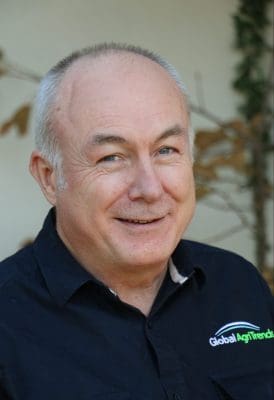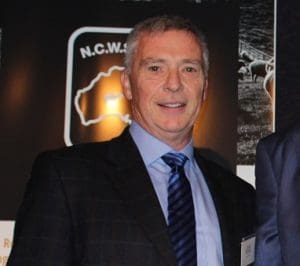 AUSTRALIA needs to be able to scour more than half its annual wool clip to ensure market access is not compromised if Foot and Mouth Disease breaks out, two analysts have concluded.
AUSTRALIA needs to be able to scour more than half its annual wool clip to ensure market access is not compromised if Foot and Mouth Disease breaks out, two analysts have concluded.
Global AgriTrends analyst Simon Quilty and Merino International principal Grant Hutchins believe the cost of increasing scouring capacity would be significantly less than the potential cost of an FMD outbreak.
The analysts estimate the cost to the wool industry of an FMD incursion would be about 40-50 percent of the annual clip’s $2.8 billion value, depending on which markets close and the closure period.
“There is a genuine need to become self-sufficient in scouring or at least ensure more than half of Australia’s clip can be processed and scoured on-shore.
“This ensures that Australia’s market access is not compromised,” they said.
“It also adds value to the wool, which could bring a higher return to the Australian industry and ultimately gives greater control to Australia’s wool industry future.
“With the current geopolitical global unrest, particularly with Australia’s relationship with the United States and Taiwan and the fractured relationship with China, this ability to become self-sufficient in scouring could not happen quickly enough.”
After considering the circumstance of China’s recent ban on South African wool imports due to FMD outbreaks and the OIE guidelines for FMD deactivation in wool, Quilty and Hutchins concluded that “the only truly universal accepted method (for deactivation) is scouring.”
The analysts said many key industry players regard the potential loss in market value versus building scouring capacity as a simple risk-reward ratio.
“Scouring seems to be the only valid single option available to wool exporters worldwide who face potential export bans due to FMD.”
The analysts have recommended that Australia’s onshore scouring capability be expanded to 200,000 tonnes greasy, with scouring Australian wool offshore a “minimal” option as there is little excess overseas capacity available.
“There is a genuine need to become self-sufficient in scouring or at least ensure more than half of Australia’s clip can be processed and scoured onshore.
“This ensures that Australia’s market access is not compromised,” the analysts argue.
“It also adds value to the wool, which could bring a higher return to the Australian industry and ultimately gives greater control to Australia’s wool industry future.
“With the current geopolitical global unrest, particularly with Australia’s relationship with the US and Taiwan and the fractured relationship with China, the ability to become self-sufficient in scouring could not happen quickly enough.”
What happened in China
China only recently ended a five-month import ban on South African wool after South Africa’s latest FMD outbreak. The ban was imposed despite agreement in 2019 between China and South Africa on heat treatment protocols for wool.
According to Cape Wools SA chief executive officer Deon Saayman, to scour wool on the scale mentioned in the AgriTrends report would be quite a challenge, “but is definitely a mechanism that should be investigated.”
He said South Africa is well into a study to resume wool scouring and combing in the country.
“The main driver has; however, not been FMD, but demand for value add.
“It will; however, be a definite risk mitigation as well, but will start relatively small initially, with the possibility of expansion once proven successful.”
Increasing wool scouring capacity for FMD mitigation would be expensive

David Michell.
Wool Industries Australia chairman and Michell Wool executive director David Michell said increasing Australia’s wool scouring capacity just for FMD mitigation “is an expensive thought process.”
“I’m not sure that reason alone would support a commercial investment.”
Mr Michell said Australia’s current onshore scouring capacity is about 20 million kilograms across two plants – Michell in South Australia and EP Robinson in Victoria — plus another 15m kgs of carbonising capacity. He queried how much of Australia’s current clip would need to be scoured to represent a FMD solution and what would happen to the balance.
He said to build a greenfield scour with a capacity of 30m kgs would cost about $30m (land, building, machinery with access to energy, water, logistics and labour).
“To spend $200-300m there would need to be a compelling commercial case to attract risk capital or require some government support and demand from customers – wool combers and spinners.
“Local garment manufacture is not relevant in this discussion as all fabric (or yarn) is made elsewhere,” Mr Michell said.
“Local processors like Michell would add capacity now if demand was commercially there, so I don’t think there is any lack of desire to do more here.
“FMD would be a ‘cherry on the cake’ bonus for a commercial investment, but not a driver for investment as no one will pay more for the onshore process,” he said.
Mr Michell said buyer demand for onshore processing is limited by China’s large purchases of Australian wool that gets scoured in China.
“Increased demand would most likely be linked to increased investment is combing — much more expensive than scouring — elsewhere in the world or in Australia.
“A 10,000 kg combing plant will cost circa $50m,” he said.
Mr Michell said recent sharp increases in shipping does help the analysis as average yield is 64pc for Australian Fleece.
“We’re shipping 36pc dirt and other agricultural ‘by products’ with the wool.
“FMD as a stand-alone issue can’t quickly be fixed by adding scouring – that’s a two-year project for one scouring plant of, say, 30m kgs,” he said.
“However, in the meantime, the industry has implemented good systems to manage an Emergency Animal Disease outbreaks.”
Mr Michell said WoolProducers Australia has the responsibility to co-ordinate all members of Wool Industries Australia for communication and processes for on and post farm gate.
“This work has been 15 years in the making.
“We have been in weekly contact with our Chinese counterparts during the recent FMD issue in Indonesia to keep information flowing so sensible decisions can be made,” he said.
“So short-term we’re doing what we can but with an eye to industry rebuilding opportunities.”
FMD mitigation considered in processing project
WoolProducers Australia chief executive officer Jo Hall said when WPA undertook the project ‘Ensuring a sustainable Australian Wool Industry through market diversification and risk mitigation’, investigating the feasibility of domestic and diversified processing and emergency animal disease risk mitigation were key factors identified when lobbying for government funding.
“A principle component of these conversations was that WoolProducers understood that in a major EAD incursion, that the export of an animal product, such as wool would halt, but the exportation of a fibre would be far more acceptable.”
WoolProducers Australia received a grant under the Federal Government Agricultural Trade and Market Access and Cooperation (ATMAC) program for the project, to identify opportunities to mitigate and reduce the current risks faced by the Australian wool industry through its current reliance on a limited number of export markets. The project has sought to assess the feasibility of different risk mitigation strategies through the following activities:
Economic analysis of early-stage wool processing in Australia
Assessment of opportunities to develop/enhance early-stage processing capacity in diversified onshore and offshore locations.
Ms Hall said whilst there is increased interest in EAD preparedness and mitigation activities in Australia, it is important to note the feasibility study has been commissioned with no predetermined outcome in mind.
She said WPA is seeking a purely economic approach in the report, and did not see the proximity of FMD and Lumpy Skin Disease to Australia, and the recent experience of South Africa as making a decision on the benefits of early stage wool processing in Australia more urgent.
“We had identified these risks years before FMD was found in Indonesia,” she said.
Deloitte Access Economics final report on the project is due to be released on Tuesday 8th November.
“We are expecting a comprehensive report, outlining a number of key recommendations for the industry and associated stakeholders to consider,” Ms Hall said.
Click here to read the Global AgriTrends analysis.

For the wool scouring part, why not consider the Wool Tech process using solvent?
Doubtless, some will recall decades ago the efforts of Jim Maple Brown and Jonathan Todhunter, with a bit of assistance from me, to establish a sophisticated wool processing industry in Parkes, with some Labor government money also.
The plant was established and ran very well for a while until labour costs and the beginning of Chinese processing got the better of it. Indeed, the Chinese later bought the plant and shipped all of it back to China.
The belief now, it seems, that as the Chinese themselves are moving out of processing and that Vietnam and Bangladesh cannot take up the slack, or provide nuanced products to the needs of others, Australia should for the third time of asking, or is it the 6th, re-enter the early stage processing business, if not tops. If the time is right, and if those involved look closely at earlier experiences, they may be on to something, but they should do their homework first.
Elders, which bought the plant off the originators and resold it to the Chinese, could tell them a tale or two also.
Hi Andrew, I would love to connect and learn more about the wool processing attempt few decades ago…
It is an embarrassment to Australia that we do not scour most of our wool in this country. Unless we develop homegrown industry we will always be beholden to countries such as China. We have become totally addicted on exporting raw materials for our prosperity. During COVID we learnt a very hard lesson as essential supplies of medicines, chemicals, fertilisers and essential machinery became very difficult to source. Wasn’t this the wake up call we needed to become self-reliant?